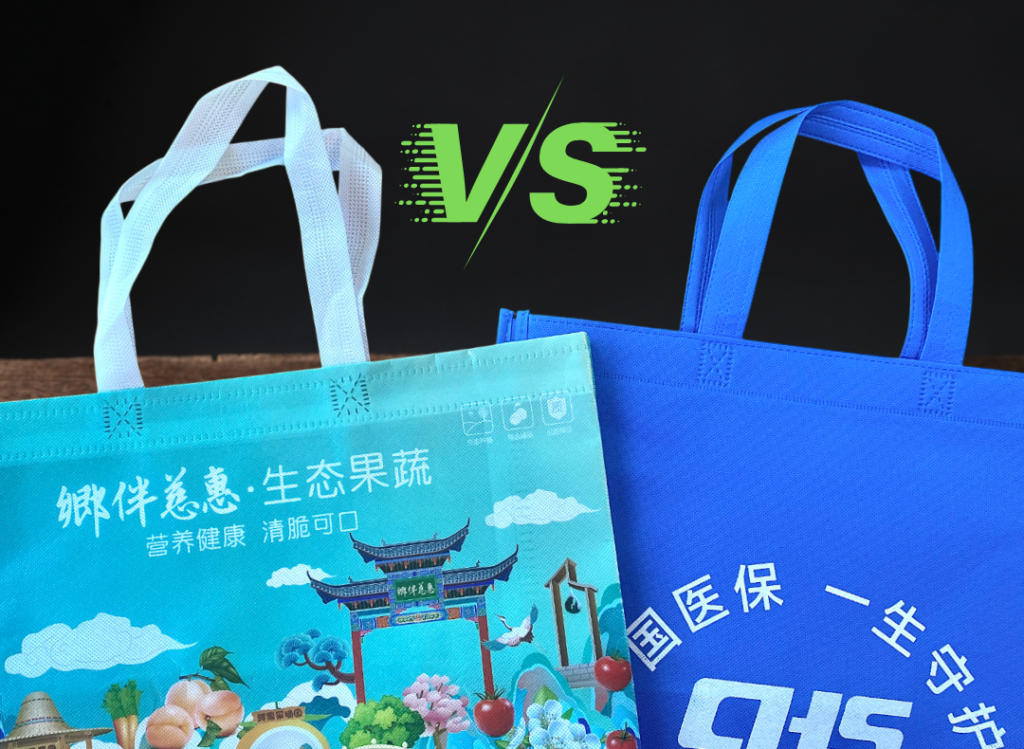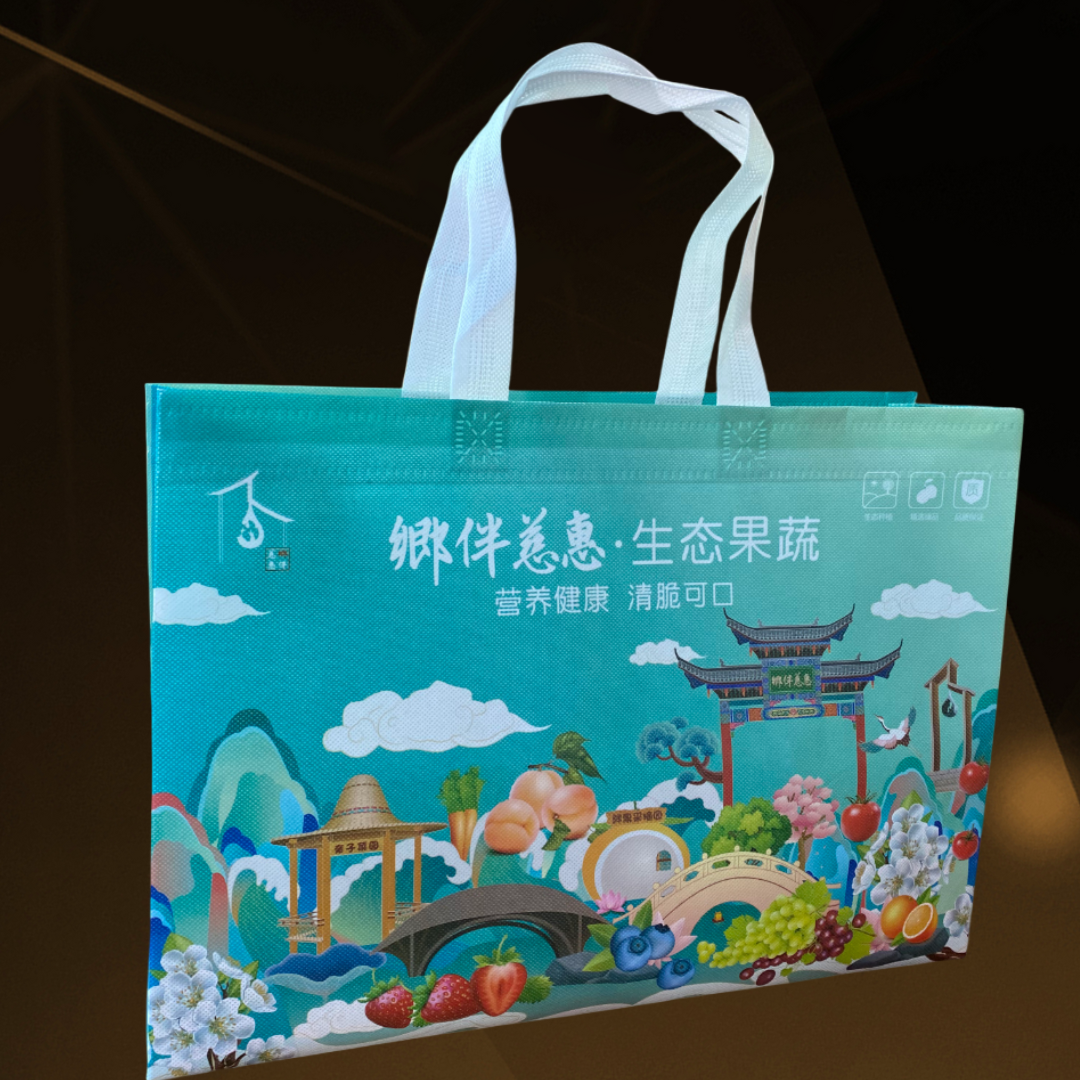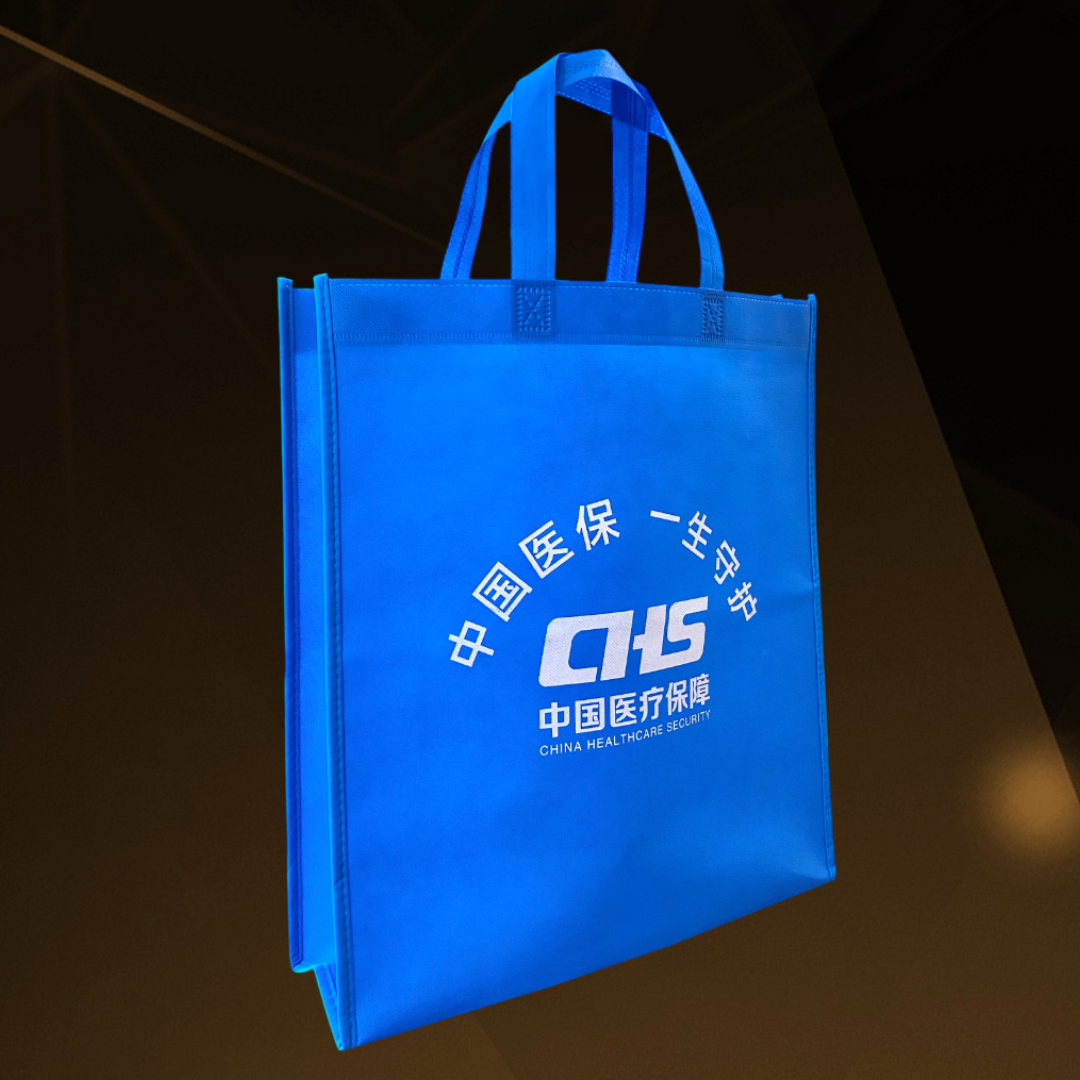Lamination VS Non-Lamination:Which is the Best for You?
- Fullpacking
- November
Non-woven fabric bags have become an important symbol of an environmentally friendly lifestyle. The choice of printing process during the production of non-woven bags can directly affect their appearance, functionality, and cost. Common methods can be divided into lamination and non-lamination (silk screen printing or offset printing). So, what are the differences between lamination and non-lamination? Which one is more suitable for your needs? Let’s compare in depth.

Characteristics of Lamination Process
Lamination is the process of adding a layer of film (OPP film) to the surface of non-woven fabric, combined with specific printing methods (such as color printing or pattern transfer).
Advantages
- Water resistance: Lamination provides the bag with good waterproof performance, protecting the contents from moisture.
- Vivid colors: Lamination can achieve high-definition color printing, suitable for designs that require complex patterns or advertising effects.
- Easy to clean: Stains can be wiped directly with a damp cloth, convenient for daily use.
- High-end feel: The smooth surface gives the bag a more textured look, suitable for brand promotion or high-end scenarios.
Disadvantages
- Not easily degradable: The laminated material is mainly plastic, which is environmentally friendly but takes longer to degrade.
- Higher cost: The production cost of laminated non-woven bags is higher than that of ordinary screen-printed bags.
- Poor breathability: Lamination can hinder the breathability of the bag, so it should be carefully considered if you need to store items that require ventilation.

Characteristics of Non-Lamination (Silk Screen/Offset Printing)
Silk screen/offset printing is a process that directly prints patterns onto the surface of non-woven fabric without adding an additional plastic layer.
Advantages
- Environmentally friendly: The design without a plastic layer is more in line with environmental protection concepts, and the bag degrades faster naturally.
- Lower cost: The manufacturing process is simple, suitable for projects with a limited budget.
- Good breathability: Suitable for storing food or items that need to remain dry.
- Simple and rustic: Non-laminated bags have a more natural and handmade feel.
Disadvantages
- Poor water resistance: Non-laminated non-woven bags are easily damaged when exposed to water.
- Not suitable for intricate patterns: Silk screen/offset printing is better suited for single-color or simple pattern printing, and complex designs may not be clear enough.
- Difficult to clean: The fabric surface is prone to dust or stains and is not easy to clean.

How to Choose the Right Non-Woven Bag for You?
The choice between laminated and non-laminated non-woven bags depends on several key factors:
Purpose
- If you need a bag that is waterproof, stain-resistant, and displays brand advertising, such as event gift bags or shopping bags, laminated bags are a good choice.
- If you focus on breathability or the environmental characteristics of the bag, such as food packaging or minimalist design, non-laminated bags are more suitable.
Budget
- Lamination bags are costly, but they have a longer lifespan, suitable for high-frequency use or high-end brand projects.
- If the budget is limited and the bags are for one-time or short-term use, non-laminated bags are more cost-effective.
Design requirements
- For color printing and high-quality texture designs, choose the lamination process.
- For simple text, icons, or single-color printing, silk screen printing is sufficient.
Summary: Lamination VS Non-Lamination
|
Characteristics |
Laminated Non-Woven Bags |
Non-Laminated Non-Woven Bags (Silk Screen) |
|
Water resistance |
Excellent |
Poor |
|
Environmental friendliness |
Lower |
High |
|
Cost |
Higher |
Lower |
|
Breathability |
Poor |
Excellent |
|
Visual effect |
High-definition color |
Suitable for simple designs |
Whether laminated or non-laminated, both have their unique advantages and applicable scenarios. Understanding their differences can help you choose the most suitable product.
This article hopes to help you make a wise decision when selecting non-woven bags! If you have any other questions, please feel free to leave a message for discussion.


